The topic of this essay serves as a segway between the previous essay series on estrogen and testosterone, and the next essay series on modern barriers to scientific progress: how the subject of sex has become politicized in recent years. Jerry Coyne, a Professor Emeritus in the Department of Ecology and Evolution at the University of Chicago, where he worked on the genetics of species formation, and Luana Maroja, an evolutionary biologist and professor at Williams College, recently wrote an article entitled “The Ideological Subversion of Biology,” that succinctly summarizes the current politicization of sex, as follows:
Here we give … examples of how our own field—evolutionary and organismal biology—has been impeded or misrepresented by ideology. Each example involves a misstatement spread by ideologues, followed by a brief explanation of why each statement is wrong. Finally, we give what we see as the ideology behind each misstatement and then assess its damage to scientific research, teaching, and the popular understanding of science. Our ultimate concern is biology research—the discovery of new facts—but research isn’t free from social influence; it goes hand in hand with teaching and the public acceptance of biological facts. If certain areas of research are stigmatized by the media, for example, public understanding will suffer, and there will follow a loss of interest in teaching as well as in research in these areas … We concentrate on our own field of evolutionary biology because it’s what we feel most compelled to defend, but we add that related ideological conflicts are common in sciences such as chemistry, physics, math, and even computer science. In these other areas, however, the clashes involve less denial of scientific facts and more effort toward purifying language, devaluing traditional measures of merit, changing the demographics of scientists, drastically altering how science is taught, and “decolonizing” science. Evolutionary biology has been especially susceptible to attacks on scientific truth because it deals with the most fraught topic of all: the origin and nature of Homo sapiens. We begin with a misconception about our species that’s become quite common.
1. Sex in humans is not a discrete and binary distribution of males and females but a spectrum. This statement, one of the most common political distortions of biology … is wrong because nearly every human on earth falls into one of two distinct categories. Your biological sex is determined simply by whether your body is designed to make large, immobile gametes (eggs, characterizing females) or very small and mobile gametes (sperm, characterizing males). Even in plants we see the same dichotomy, with pollen producing the tiny sperm and ovules carrying the large eggs. The size difference can be huge: a human egg, for instance, has ten million times the volume of a single sperm. And each gamete is associated with a complex reproductive apparatus that produces it. It is the bearers of these two reproductive systems that biologists recognize as “the sexes.” Because no other types of gametes exist in animals or vascular plants, and we see no intermediate gametes, there is no third sex. Although many species of animals and flowering plants have hermaphrodites, these simply combine male and female functions (and gametes) within single individuals and don’t constitute a “third sex.” Further, developmental issues can sometimes produce people who are intersex, including hermaphrodites. Developmental variants are very rare, constituting only about one in 5,600 people (0.018 percent), and also don’t represent “other sexes.” (We know of only two cases of true human hermaphrodites who were fertile, but one individual was fertile only as a male and the other only as a female.) Only in protists, fungi, and algae do we find more than two distinct classes of individuals having gametes of the same size (“isogamous”), with individuals able to mate with members of any class but their own. If you relax the definition of sexes, these could be viewed as multiple sexes, but to avoid confusion biologists call them “mating types.” For all practical purposes, then, sex is a binary—not just in humans but in all animals and plants. And it’s a binary because natural selection has favored the evolution of a binary. In 1958, the famous evolutionist Ronald Fisher posed the crucial question: “No practical biologist interested in sexual reproduction would be led to work out the detailed consequences experienced by organisms having three or more sexes; yet what else should he do if he wishes to understand why the sexes are, in fact, always two?” Although it’s not really necessary to have two discrete gamete types to obtain the well-established advantage of sexual reproduction, the evolution of the sexual binary has happened multiple times. Both biological observation and mathematical models, whose messy details we can ignore, show why the number two is ubiquitous. Beginning with an ancestral species having gametes of equal size (“isogamy”), natural selection often promotes the splitting of the population into two groups of individuals having very different gametes (“anisogamy”)—either small and mobile ones or large and immobile ones. Two sexes have thus evolved, and henceforth the species will resist the invasion of individuals having other types of gametes—that is, other new sexes. We can see the stability of the two-sex condition by realizing that what triggers the development of males versus females varies widely across species. Different sexes can be based on different chromosomes and their genes (e.g., XX vs. XY in humans, ZW vs. ZZ in birds, individuals with like chromosomes being female in mammals and male in birds); different rearing temperatures (crocodiles and turtles); whether you have a full or half set of chromosomes (bees); whether you encounter a female (marine worms); and a host of other social, genetic, and environmental factors. Natural selection has independently produced diverse pathways to generate the sexes, but at the end there are just two destinations: males and females. And so we have an evolved and objectively recognized dichotomy—not an arbitrary spectrum of sexes. But despite the facts, the dichotomy of sex—especially in humans—has recently come under ideologically based attacks. Even in apparently objective discussions of sex and gender, individuals are often said to have been assigned their sex at birth (e.g., “AFAB”: assigned female at birth), as if this were an arbitrary decision by doctors—a “social construct”—rather than an observation of biological reality. … Teachers have been hounded out of their jobs and deprived of their classes simply for declaring that human sex is binary. As we’ll see, this controversy comes from a deliberate conflation of a biological reality, the sexes, with a social construct, genders. Denying the dichotomy of sex prevents us from understanding one of biology’s most fascinating generalizations: the difference between males and females in behavior and appearance. The color, ornamentation, large size, and weapons of males compared to their absence in females, a difference seen in species such as deer, birds, fish, and seals, result from sexual selection: the process, first suggested by Darwin, in which males compete with each other for access to females. This involves either direct antagonism between males, as in the jousting of deer, or by males appealing to female preferences through their color, ornaments, and behavior. And this near-universal observation in nature ultimately comes from females investing more in reproduction than males, starting with those big and metabolically expensive eggs. Ultimately, this puts the burden of parental care largely on females. Tied up in offspring production and rearing, females thus become the sex less available for mating, even when the ratio of males to females is 1:1. Sexual selection also explains behavior: why, in most species—including our own—males are more promiscuous than females, who are picky about their mates. For a male, fertilization involves merely expending a teaspoon or so of sperm, while for females eggs are few and expensive, pregnancy is long, and then there are those pesky offspring to tend and feed—for years in humans. Antlers, plumes, peacock’s tails, elaborate male mating dances, bird songs: these and a host of other traits make sense only as the evolutionary results of having different-size gametes. Why do so many people resist the sex binary? Because it’s in their ideological interest to conflate biological sex with gender—one’s social identity or sex role. Unlike biological sex, gender does form more of a continuum (online lists give dozens of genders). Still, gender distributions are camel’s-hump bimodal: most people conform to male and female gender roles, but there are many more intermediates than we see for biological sex. And why do people distort the truth? We suspect that some of those whose gender doesn’t correspond to one of the two biological sexes, and their allies, want to redefine sex so that, like gender, it forms more of a continuum. While jettisoning the sex binary is meant well, it also severely distorts scientific fact—and all the evolutionary consequences that flow from that fact.
That last sentence makes a fundamental point, which is that denying two sexes necessarily denies the process of evolution that produced those two sexes. Coyne and Maroja then discuss more false, politicized claims regarding sex:
2. All behavioral and psychological differences between human males and females are due to socialization. Evolution and genetics are often claimed to play no role in these differences. This is the well-known “blank slate” ideology, which asserts that all humans, including males and females, are born with the propensity to behave in similar ways, and whatever behavioral or psychological differences we see among groups derive purely from socialization, including economic or environmental influences. To a biologist, this kind of blank-slateism—which may stem partly from the Marxist faith in the infinite malleability of humans—is profoundly wrong. Multiple studies clearly show that there are average differences between men and women in a long list of behaviors influenced by biology, including sexual interests, parental care, aggression, degree of promiscuity, risk-taking, interest in people versus things, empathy, fearfulness, spatial abilities, violence, and traits connected to social relations. It’s important to realize that we’re talking about averages here: there’s a lot of overlap between the distributions of male and female behaviors, so individuals can show characteristics seen more often in the other sex. Some women, for example, are more aggressive than the average man. And we must add that socialization is a likely contributor—perhaps a major one—to many behavioral differences between men and women. But can we assert that these average differences result solely from socialization? No. It’s likely that the average differences in the behaviors listed above not only have a biological basis but an evolved and genetic one. That is, it’s certain that, over millions of years, natural selection caused some behaviors of males and females to diverge. How do we know this? By using multiple criteria, including evaluating the general likelihood of an adaptive explanation; looking for behavioral parallels in other species (especially our closest primate relatives); determining whether a sex difference in behavior is ubiquitous among different human cultures, including hunter-gatherers; testing whether the behavior is influenced by reproductive hormones such as testosterone; and seeing if the behavior appears at the expected time of development. Risk-taking and male-male aggression, for example, are strongest during the peak reproductive years of young adulthood—just as we expect if these are behaviors that evolved to help men secure mates. But to many, even suggesting a biological basis for sex differences in behavior is taboo, perceived as a kind of misogyny. A recent example is Chelsea Conaboy’s declaration in The New York Times that “Maternal instinct is a myth that men created.” Here she argues that well-known differences between men and women in attentiveness and behavior toward their children is due entirely to socialization. The obvious retort from biology is that while some human societies do force the burden of maternal care onto women, the greater attentiveness of mothers than fathers to their children—attentiveness triggered by cues such as hormones, lactation, infant crying, and the sight of babies—is seen not only in every human society but, more important, also in thousands of other animal species, including our closest primate relatives. Tellingly, these other species lack the social pressures that, to blank slaters, explain sex differences. It would be an odd coincidence indeed if misogyny and the patriarchy just happen to create a situation in humans identical to that seen in our evolutionary cousins—as well as in our more distant relatives.
3. Evolutionary psychology, the study of the evolutionary roots of human behavior, is a bogus field based on false assumptions. The biologist P.Z. Myers joined several other critics of this field (once called sociobiology) when he asserted that: “The fundamental premises of evo psych [evolutionary psychology] are false.” Even social psychologists, who almost universally accept evolution itself, are far less enthusiastic about the idea that evolution explains important aspects of human psychology, social attitudes, and preferences. But Myers’s widely accepted view is misguided, for the fundamental premise of evolutionary psychology is simply this: our brains and how they work—which yield our behaviors, preferences, and thoughts—sometimes reflect natural selection that acted on our ancestors. Nobody denies this for our bodies—palimpsests of once-adaptive traits that are no longer useful (wisdom teeth, tailbones, and transitory coats of hair in embryos)—but opponents of evolutionary psychology deny it for our behaviors. But there is no scientific reason for such duality. Why on earth should our bodies reflect millions of years of evolution while our behaviors, thoughts, and psychology, molded by the very same forces, are somehow immune to our past? The only way this could be true is if human behaviors lacked genetic variation, a sine qua non for evolution. Yet research has shown that our behaviors are among the most genetically variable human traits! … Indeed, evolutionary psychology explains, to our best knowledge, several human behaviors. These include why we favor kin over non-kin—and closer kin over more distant kin—why we mistreat stepchildren more frequently than biological children, why males are more aggressive than females, the difference in promiscuity and sexual proclivity between men and women, why men show more sexual jealousy than women, why certain facial expressions convey emotions, why we have fears of snakes and spiders and show disgust at bodily fluids, and why we hunger for sugars and fats. Indeed, some of our behaviors, like the propensity to eat things that are no longer healthy, constitute features useful in our ancestors but now useless or even harmful. By walling off a huge area of research and teaching that involves human nature, the ideological vilification of evolutionary psychology prevents us from understanding our own species. As two evolutionary psychologists noted, “Not a single degree-granting institution in the United States, to our knowledge, requires even a single course in evolutionary biology as part of a degree in psychology—an astonishing educational gap that disconnects psychology from the rest of the life sciences.” … Unless there is a change in the Zeitgeist, and unless scientists finally find the courage to speak up against the toxic effects of ideology on their field, in a few decades science will be very different from what it is now. Indeed, it’s doubtful that we’d recognize it as science at all.
University College London mathematician Alan Sokal and retired Oxford professor Richard Dawkins have also written in the Boston Globe:
The American Medical Association says that the word “sex” — as in male or female — is problematic and outdated; we should all now use the “more precise” phrase “sex assigned at birth.” The American Psychological Association concurs: Terms like “birth sex” and “natal sex” are “disparaging” and misleadingly “imply that sex is an immutable characteristic.” The American Academy of Pediatrics is on board too: “sex,” it declares, is “an assignment that is made at birth.” And now the Centers for Disease Control and Prevention urge us to say “assigned male/female at birth” or “designated male/female at birth” instead of “biologically male/female” or “genetically male/female.” Advocates defend this lexical revision, both on purported scientific grounds and because the traditional terminology of male and female is said to undermine “inclusivity” and “equity.” But these justifications do not hold water. And the medical associations’ newspeak twists simple scientific facts beyond recognition … Whether a mammal embryo develops into a male or a female is determined by a pair of sex chromosomes: XX for females, XY for males … Much is speciously made of the fact that a very few humans are born with chromosomal patterns other than XX and XY. The most common, Klinefelter syndrome with XXY chromosomes, occurs in about 0.1 percent of live births; these individuals are anatomically male, though often infertile. Some extremely rare conditions, such as de la Chapelle syndrome (0.003 percent) and Swyer syndrome (0.0005 percent), arguably fall outside the standard male/female classification. Even so, the sexual divide is an exceedingly clear binary, as binary as any distinction you can find in biology. So where does this leave the medical associations’ claims about “sex assigned at birth”? A baby’s name is assigned at birth; no one doubts that. But a baby’s sex is not “assigned”; it is determined at conception and is then observed at birth, first by examination of the external genital organs and then, in cases of doubt, by chromosomal analysis. Of course, any observation can be erroneous, and in rare cases the sex reported on the birth certificate is inaccurate and needs to be subsequently corrected. But the fallibility of observation does not change the fact that what is being observed — a person’s sex — is an objective biological reality, just like their blood group or fingerprint pattern, not something that is “assigned.” The medical associations’ pronouncements are social constructionism gone amok.
In 2019, I was working as the Chief Counsel for the House Subcommittee on the Constitution and Civil Justice, in the U.S. House of Representatives. The Democrats controlled the House at the time, and their leadership was moving to a vote on the House floor a bill, H.R. 5, which would have made it illegal to question whatever a minor child might affirm as their perceived “gender identity” by adding “gender identity” to the current federal law’s prohibition on discrimination based on “sex.” I found a PowerPoint presentation I used at the time to point out various flaws in the legislation, and I’m reprinting that presentation today as, even then, it was apparent there would be many terrible, if unintended, consequences to the legislation if it were ever enacted into law. Below in their entirety are the slides for that 2019 PowerPoint, with some notes I used for the discussion of each slide.
Slide 1
H.R. 5 will have devastating effects on women and children by introducing self-declared “gender identity” into federal statutory law.
Slide 2
Here’s a brief description of the science. [Read slide.]
Slide 3
The first peer-reviewed science article to explore this issue found that the vast majority of kids today who say they’re “transgender” actually don’t meet any of the criteria for that mental disorder. They just got the idea off the internet.
Slide 4
Here are some descriptions from parents of their experience with their “transgender” children. [Read from slide.]
Slide 5
Here’s another parent’s description of what’s happening.
Slide 6
This peer-reviewed article concluded that it’s a bad idea to rely on the self-reports of adolescents and young adults [AYA’s] regarding transgenderism. Yet that’s exactly what H.R. 5 would require.
Slide 7
Here’s how H.R. 5 would amend Title VI. It would require that every entity receiving any federal funding (including K-12 schools, colleges and universities, and health care plans) accede to whatever anyone says their gender is. It’s an ideology based on the unscientific view that there’s no such thing as biological sex.
Slide 8
Here’s the bill’s definition of “gender identity.” It literally says “gender identity means the gender-related identity … of an individual, regardless of the individual’s designated sex at birth.” This definition requires no diagnosis whatsoever. It’s just whatever a person says they are at any given time.
Slide 9
Under H.R. 5, children will be able to demand irreversible treatments and surgeries that could render them infertile for life. Here’s how the PBS news show “Frontline” describes it. [Read slide.]
Slide 10
H.R. 5 would require the teaching of transgender issues in elementary schools. Here’s a Washington Post article showing a reading of a children’s book advocating transgenderism to kindergartners by a spokeswoman for the Human Rights Campaign, which is lobbying for this bill nationally.
Slide 11
And here’s a statement by the former head of the John Hopkins transgender clinic describing why under his watch they discontinued the program. [Read slide.]
Slide 12
H.R 5 will eliminate separate spaces for biological females under federal law.
Slide 13
Here’s a complaint filed by women at a California women’s shelter who were sexually assaulted by a male who got into the shelter as a transgender woman.
Slide 14
Here’s an article from England about a man who raped women outside of jail, became a transgender woman in jail and was transferred to the women’s prison, where he sexually assaulted another woman while in jail.
Slide 15
And this is Alexis Lightcap, an African-American high school student represented by the Alliance Defending Freedom, fighting in court to maintain separate private bathrooms and other facilities for girls.
Slide 16
H.R. 5 will eliminate the competitiveness of girls’ and woman’s sports. Duke Law professor Doriane Coleman presented the following graphs at our hearing on the bill.
Slide 17
This chart shows testosterone levels in males and females. Testosterone is what drives muscle development and physical capacity in men. There is no overlap between men and woman, and a large gap between them.
Slide 18
This chart shows that after puberty, biological males will always retain a huge physical advantage over biological females, no matter what hormones they might take after puberty.
Slide 19
And this chart shows that the lifetime best times for female runners had their scores beat in just the year 2017 by thousands of other men and high school boys.
Slide 20
And here’s a tweet by tennis great Martina Navratilova, who opposes H.R. 5 because it would eliminate girls’ and women’s sports.
Slide 21
Here’s Selina Soule, a female track competitor who just lost her opportunity for college scholarships because the top two spots at the girls’ state track meet in Connecticut were taken by biological boys.
Slide 22
Here’s the text of the Religious Freedom Act.
Slide 23
The Religious Freedom Restoration Act is a bipartisan piece of legislation. Here’s what the following House Members had to say about the Religious Freedom Restoration Act when it was enacted in 1993. [Read slides.]
Slide 24
And here’s the text of H.R. 5 that eliminates the application of that law to protect religious liberty under all the federal statutes covered by H.R. 5 (which are essentially all the federal civil rights laws).
Slide 25
Here’s what prominent gay rights advocate Andrew Sullivan has to say about H.R. 5. [Read slide.]
Slide 26
In sum … [Read slide.]
That was the basic briefing I was giving to other congressional staff back in 2019. The “Dissenting Views” in the House committee report on the same legislation -- which contains a more detailed discussion of the what the tragic, if unintended, consequences of the bill would be if it were to become law -- can be found here (starting at page 100).
Fortunately, that misguided legislation did not become law, and it has not become law since, as in the following years many more governments and organizations came to realize the dangers of politicizing the science of sex. As reported in the Free Press:
Consider these recent developments: This April, London’s Tavistock clinic—once the largest youth gender clinic in the world—was shuttered after the Cass Review revealed gender treatment for minors had privileged ideology over science in England’s NHS [National Health Service]. [The National Health Service commissioned prominent pediatrician Hilary Cass in 2020 to study the NHS’s treatment of young people experiencing discomfort with their biological sex. The final report is a scathing rebuke to the politicization of sex that accompanied misguided programs to “transition” children between sexes.] In Sweden—where legal gender reassignment was first pioneered—the National Board of Health and Welfare last year rolled back hormone therapy for minors except in “very rare cases.” In France, the National Academy of Medicine now advises “great medical caution” on the subject, citing concerns about overdiagnosis and rising rates of adult detransition. Finland’s authorities placed major restrictions on gender transition care after a study that justified their practices did not stand up to scrutiny.
Our next essay series will explore various barriers to scientific progress generally, including but not limited to the politicization of science.

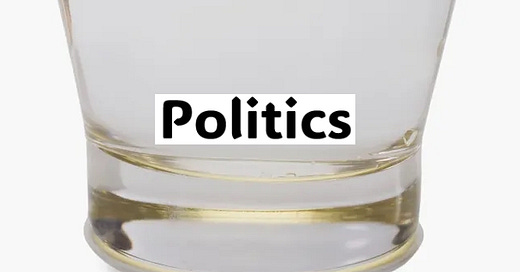




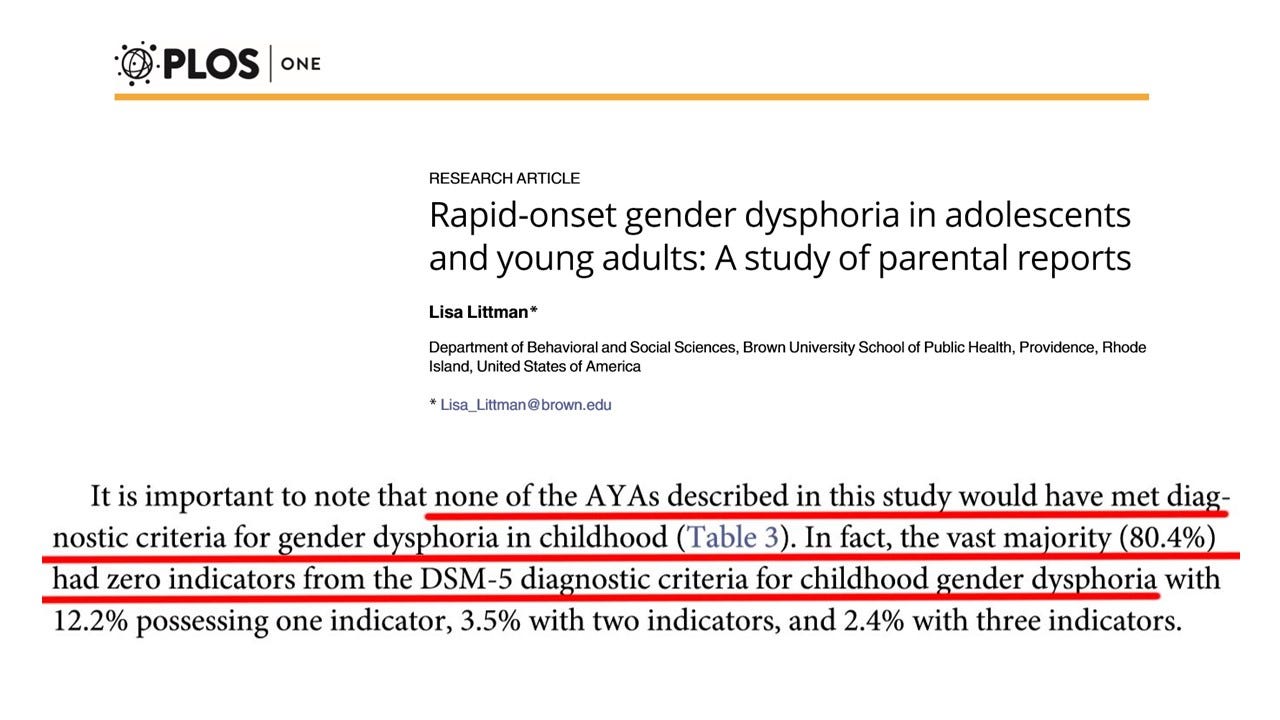

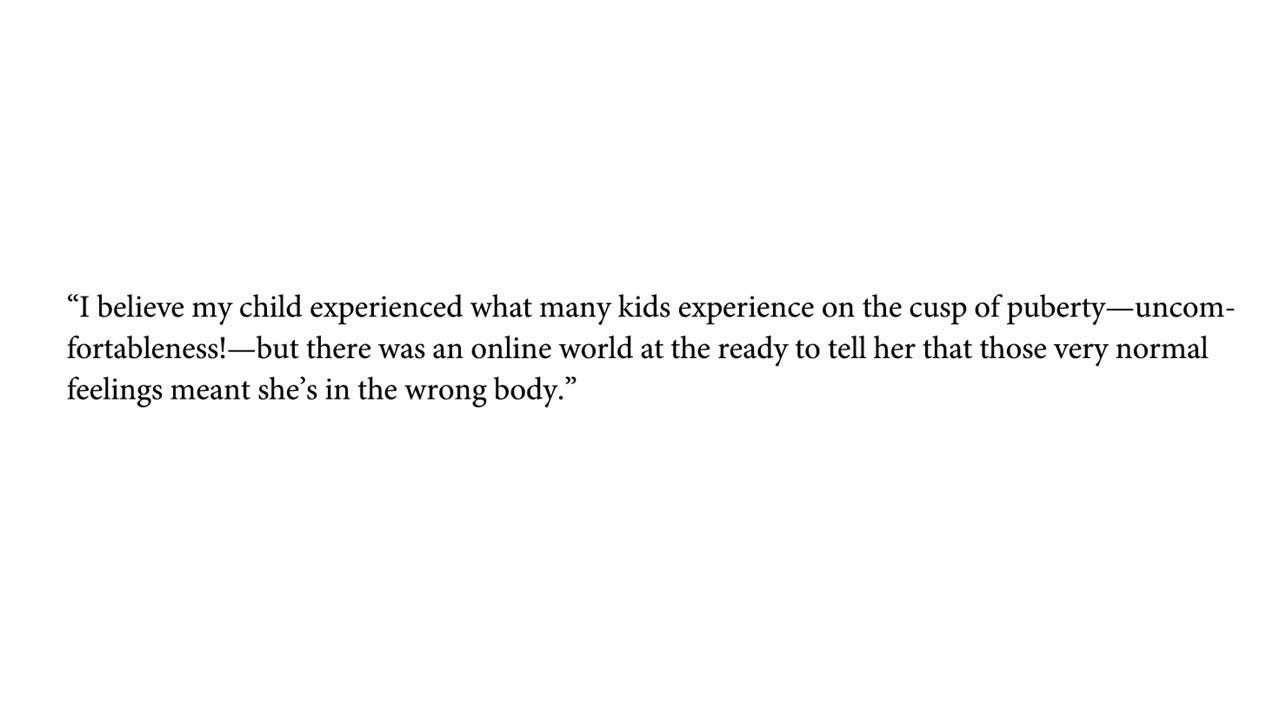
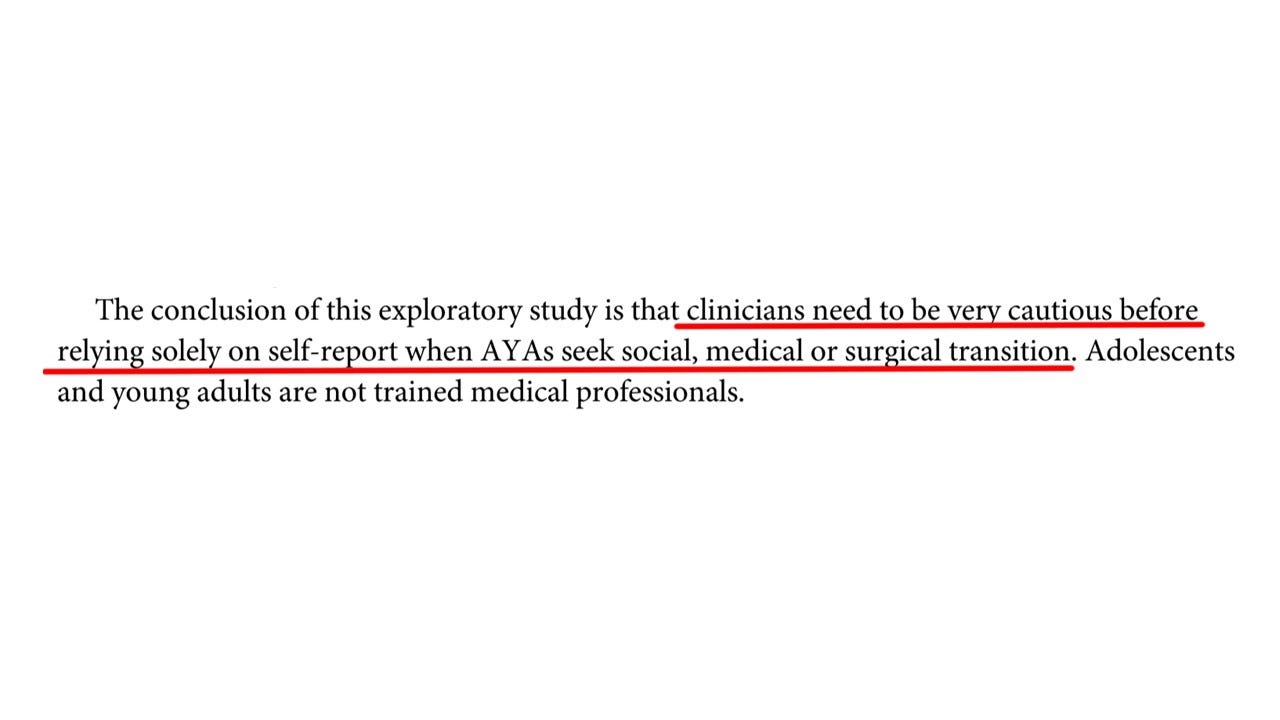
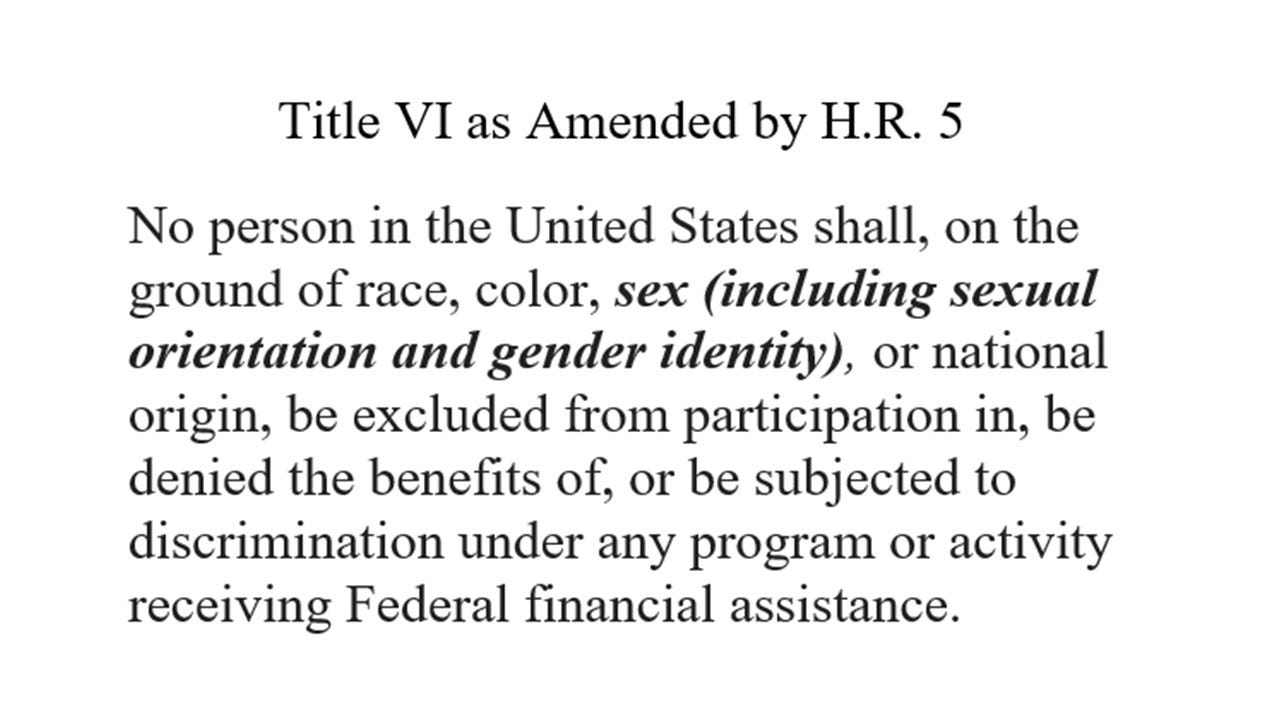

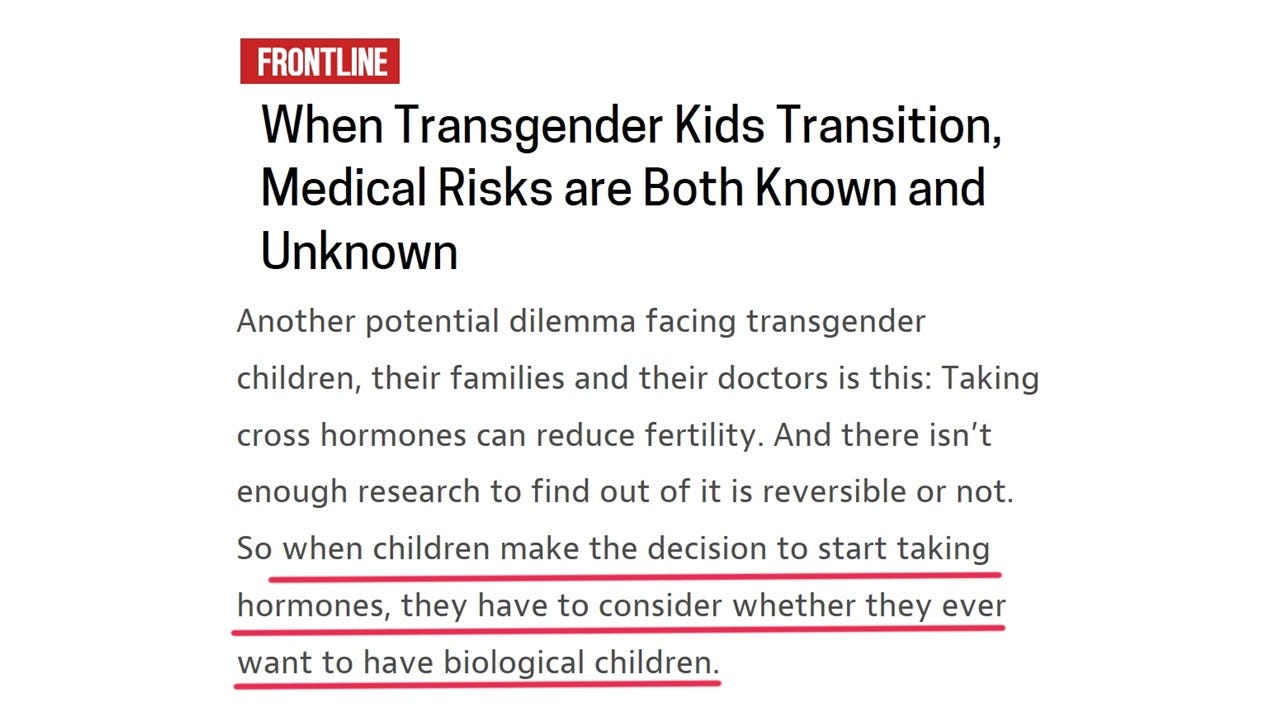

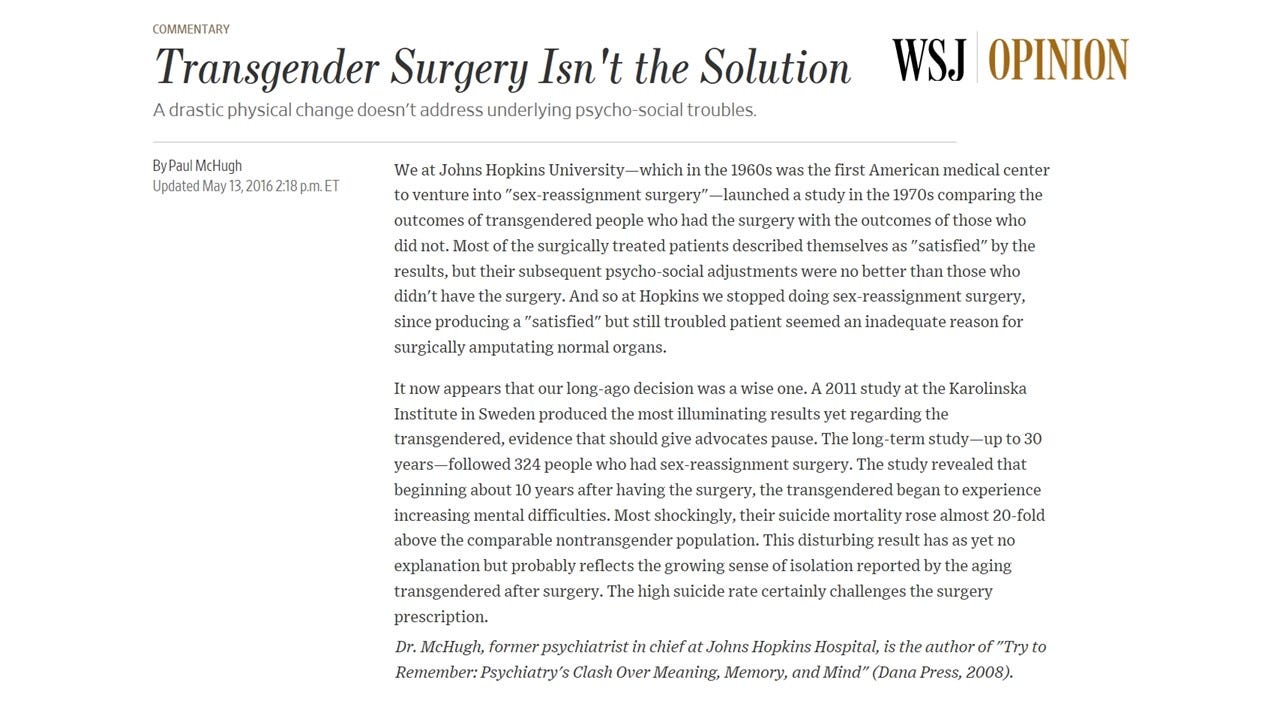


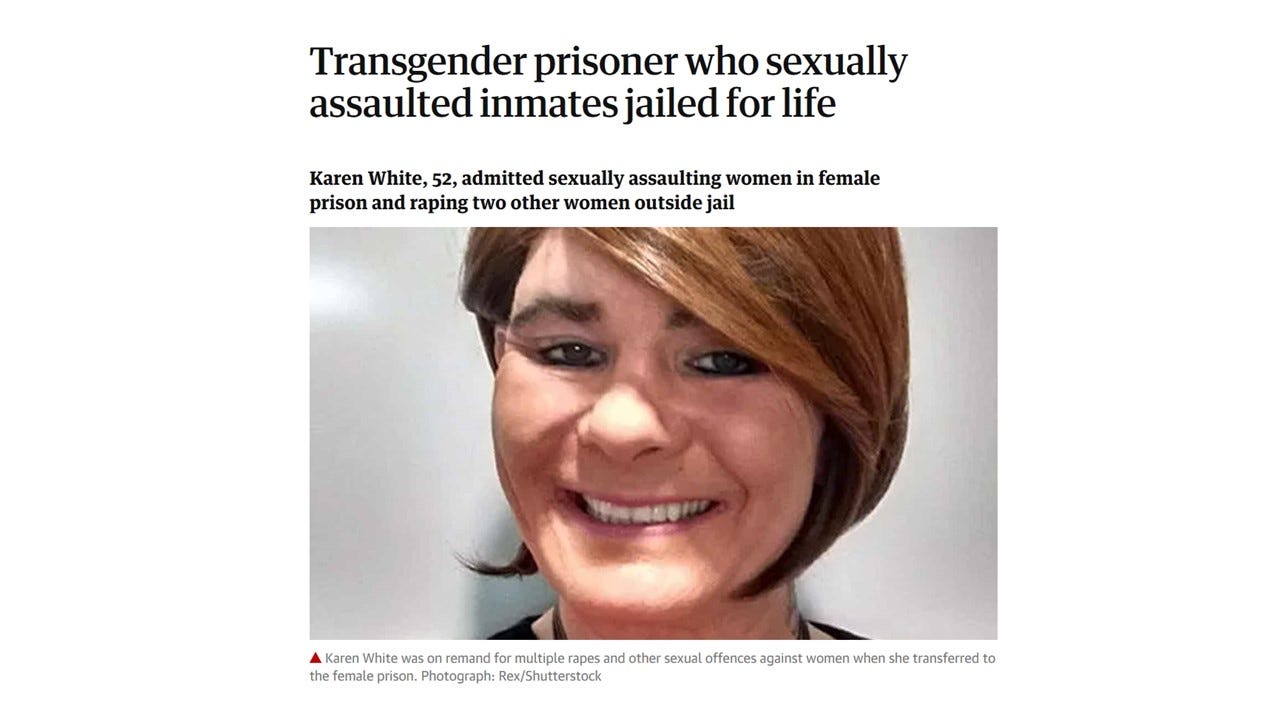


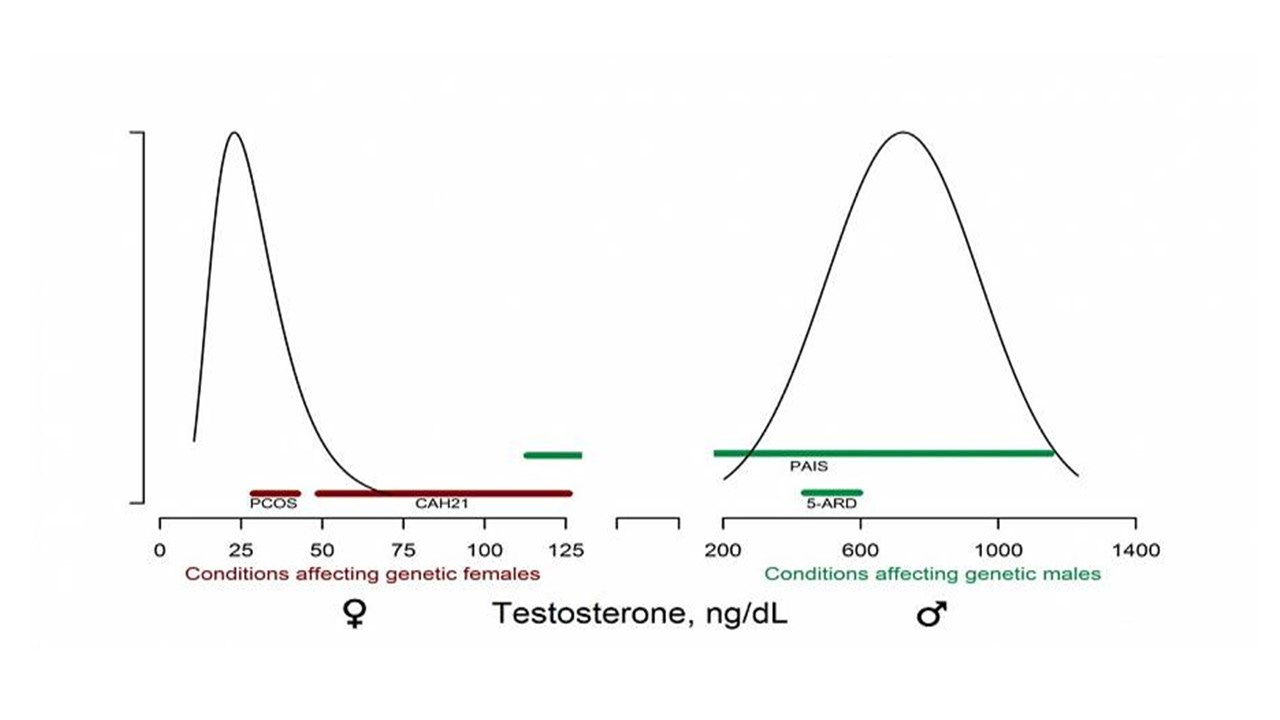

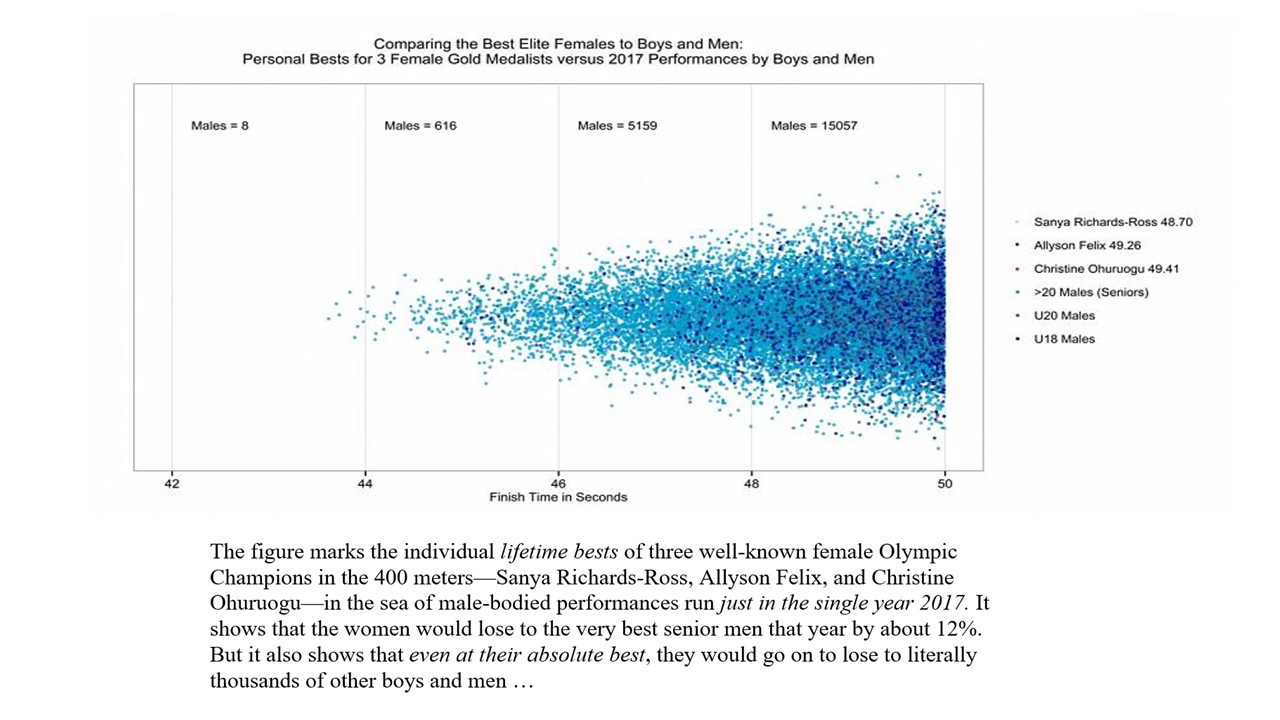





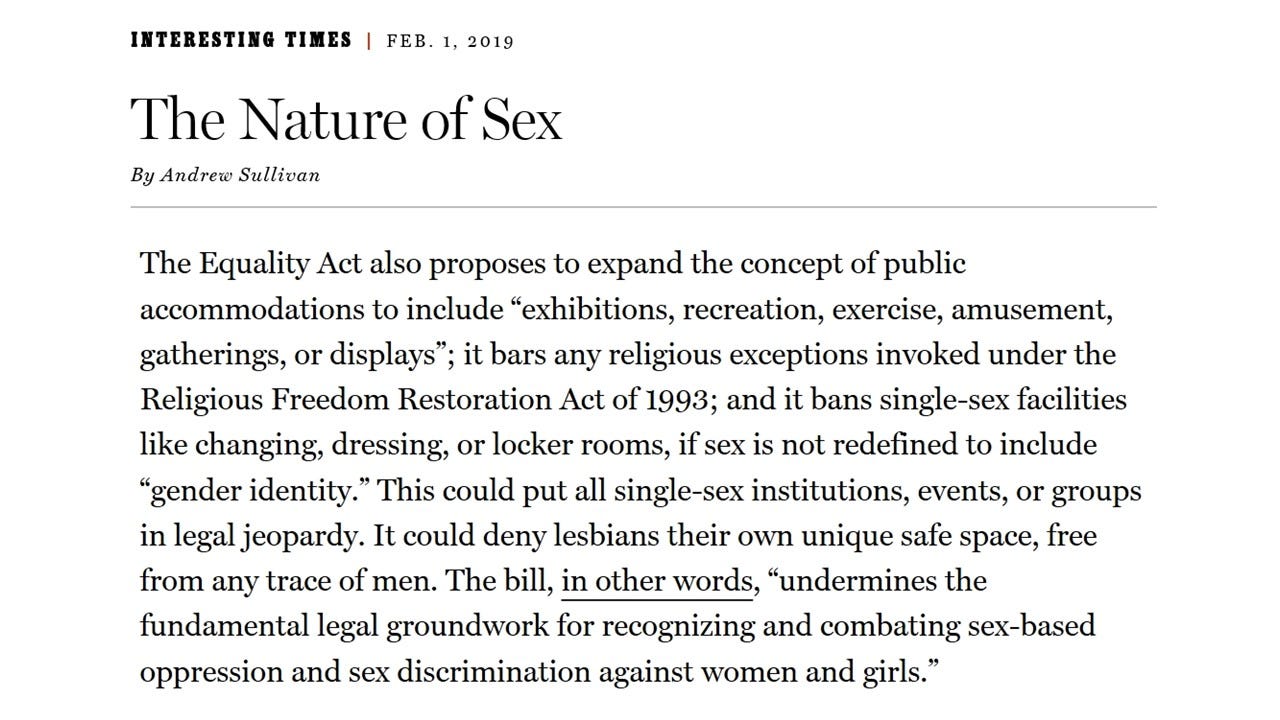
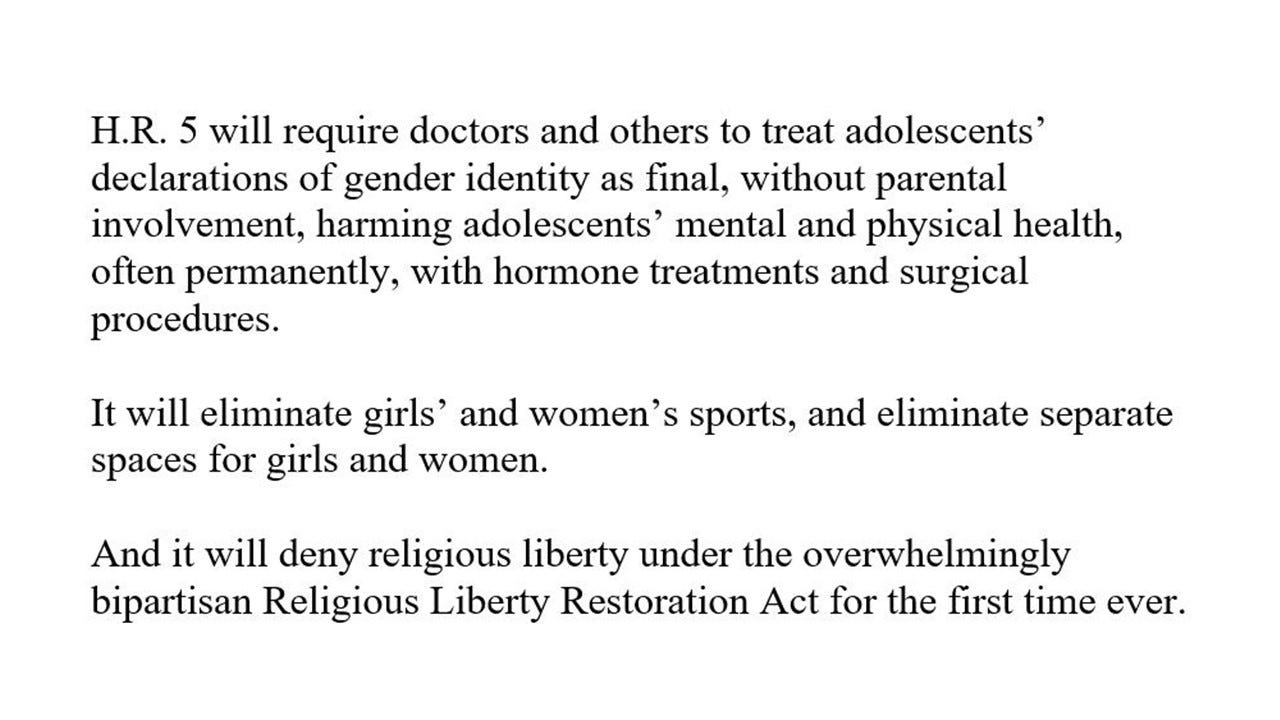
Paul, Who knew you were an advance expert on this subject that has become so pervasive. Illuminating article, as yours all seem to be. And scary topic for this doctor who has never had any problem distinguishing the sexes -- they are the foundation of mammalian biology (and most of the rest of biology as well). I am looking forward to seeing how you generalize this situation into science, but that entire area has set health care back decades while I have, sadly, watched.